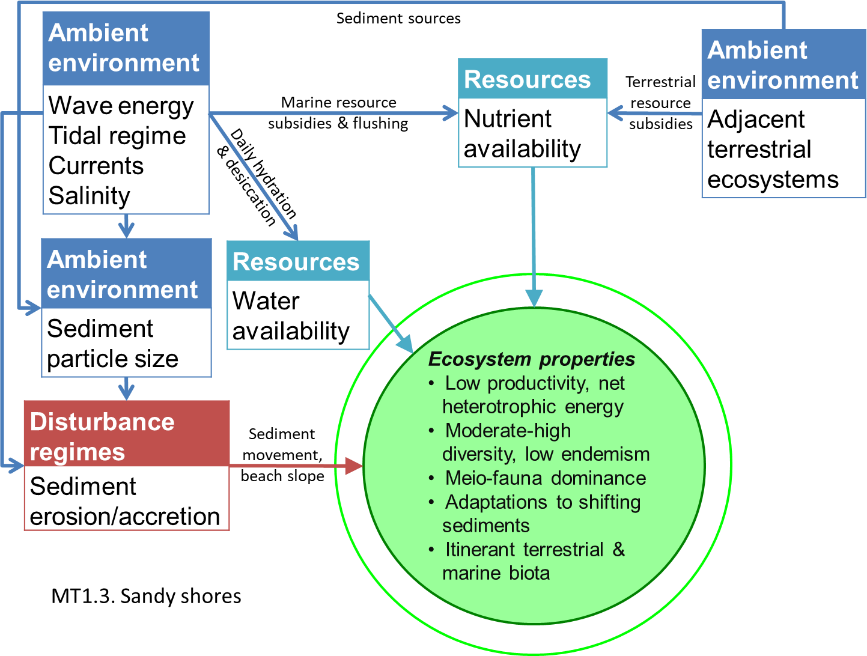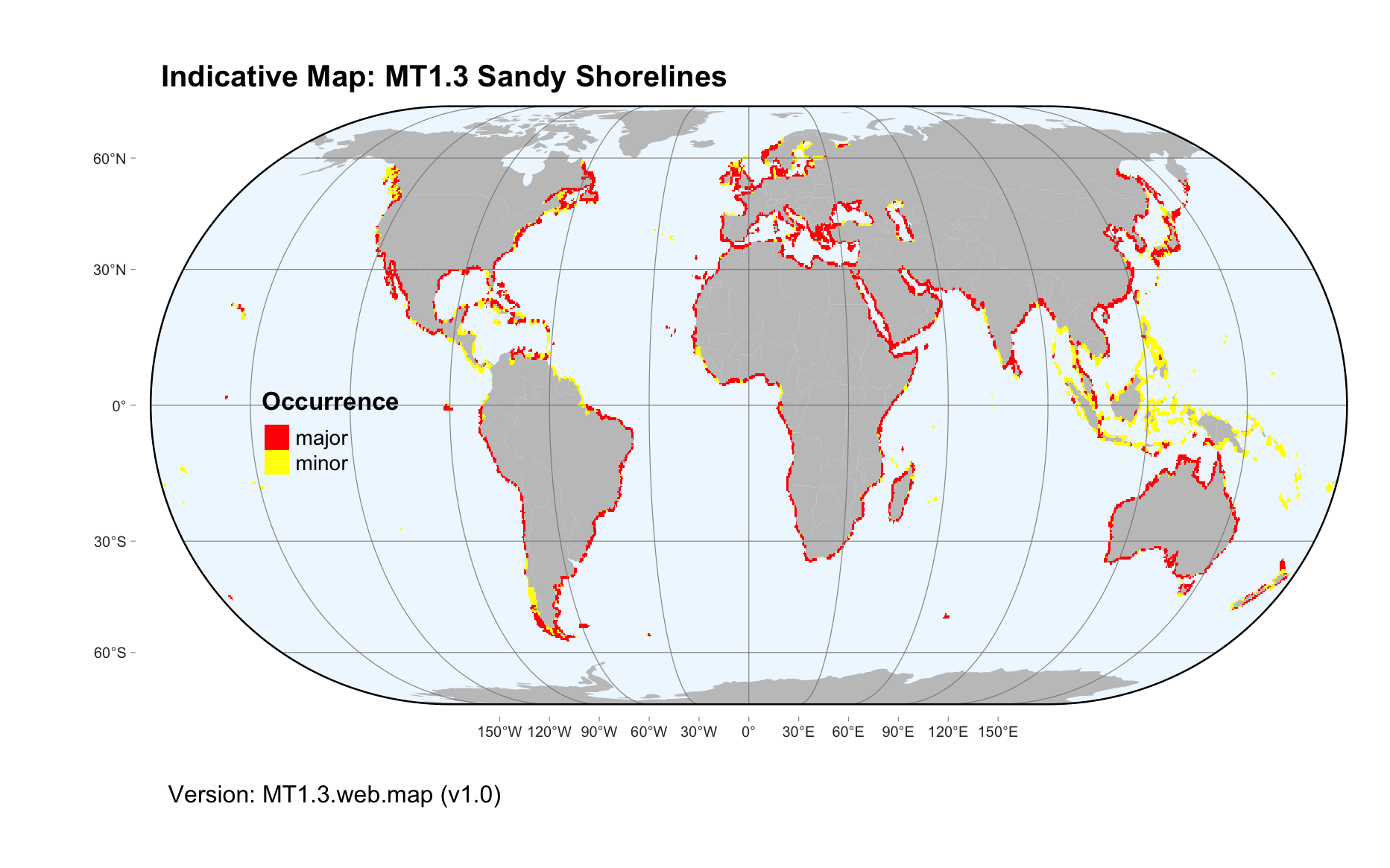Global ecosystem typology
Alternative site for the Global ecosystem typology with additional information for ecosystem profiles and indicative maps.
This site is maintained by jrfep
MT1.3 Sandy Shorelines
Biome: MT1. Shorelines biome
Contributors:
(texts)
Beaches, sand bars and spits are exposed to waves and tides on moderate-high energy coasts, and rely on drift seaweed and surf-zone phytoplankton for nutrients. Polychaete worms, bivalve shellfish and a range of smaller invertebrates burrow in the shifting sediments, while larger vertebrate animals like seabirds, egg-laying turtles and scavenging foxes can also be found at various times. Storm tides and waves periodically restructure the sediments and profoundly influence the traits of the organisms living in these highly dynamic systems.
Key Features
Intertidal soft-sediment, of large particle-size, lacking conspicuous macrophytes, and dominated by suspension-feeding invertebrates that provide a prey resource for shore birds and fishes.
Overview of distribution
Medium-high energy shorelines, particularly at temperate latitudes.
Profile versions
- v1.0 (2020-01-20): MJ Bishop; NJ Murray; DA Keith
- v2.0 (2020-05-28): MJ Bishop; SL McSweeney; DA Keith
- v2.01 ():
- v2.1 (2022-04-06): MJ Bishop; SL McSweeney; DA Keith Full profile available at official site
Main references
Selected references for this functional group:
Luijendijk A, Hagenaars G, Ranasinghe R, Baart F, Donchyts G, Aarninkhof S (2018) The State of the World’s Beaches Scientific reports 8(1) 6641 DOI:10.1038/s41598-018-24630-6
Schlacher TA, Schoeman DS, Dugan J, Lastra M, Jones A, Scapini F, McLachlan A. (2008) Sandy beach ecosystems: key features, sampling issues, management challenges and climate change impacts Marine Ecology 29(S1):70-90 DOI:10.1111/j.1439-0485.2007.00204.x
Diagrammatic assembly model

Maps
Maps are indicative of global distribution patterns are not intended to represent fine-scale patterns. The maps show areas of the world containing major (coloured red) or minor occurrences (coloured yellow) of each ecosystem functional group. See general notes on maps.
There are 2 alternative versions of the indicative map for this functional group, please compare description and sources below.
MT1.3.IM.grid_v1.0
Datasets
- Sandy-Coastlines-2020
Map references
Vousdoukas, M., Ranasinghe, R., Mentaschi, L., Plomaritis, T., Athanasiou, P., Luijendijk, A. and Feyen, L. (2020) Sandy coastlines under threat of erosion Nature Climate Change 10, 260–263 DOI:10.1038/s41558-020-0697-0
MT1.3.web.map_v1.0

Datasets
- Sandy-Coastlines-2020
Map references
Vousdoukas, M., Ranasinghe, R., Mentaschi, L., Plomaritis, T., Athanasiou, P., Luijendijk, A. and Feyen, L. (2020) Sandy coastlines under threat of erosion Nature Climate Change 10, 260–263 DOI:10.1038/s41558-020-0697-0
Check: the Glossary / Profile structure / the public document